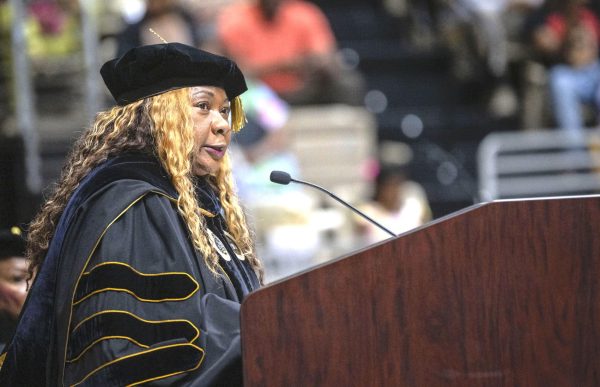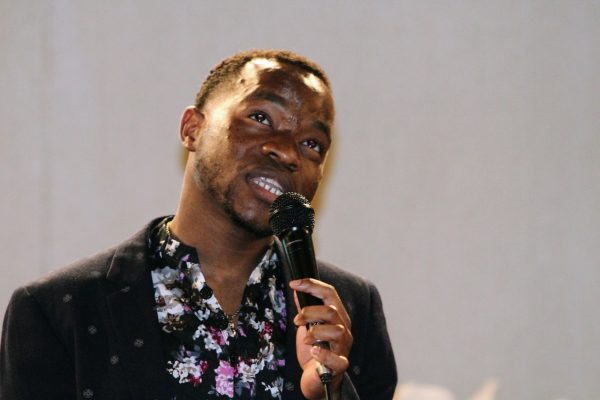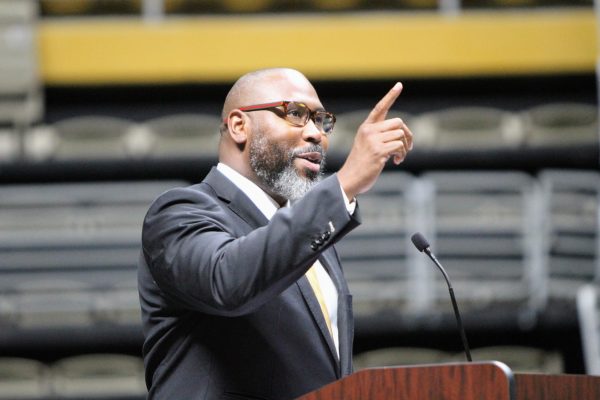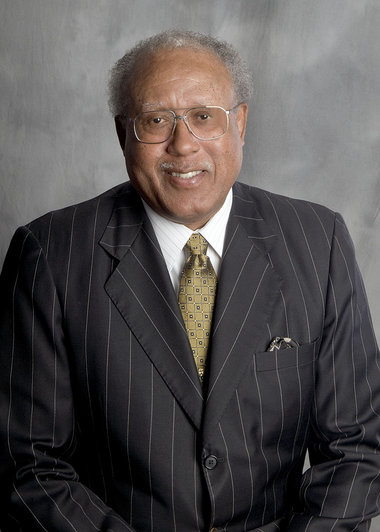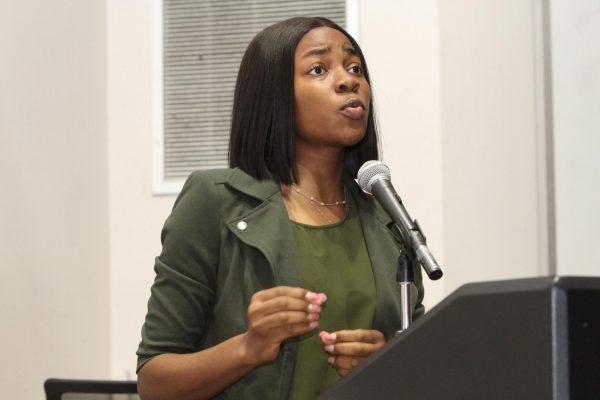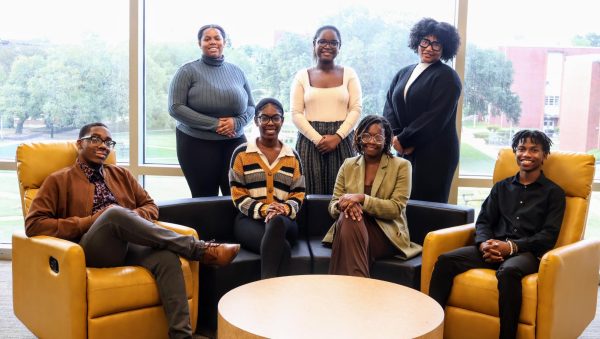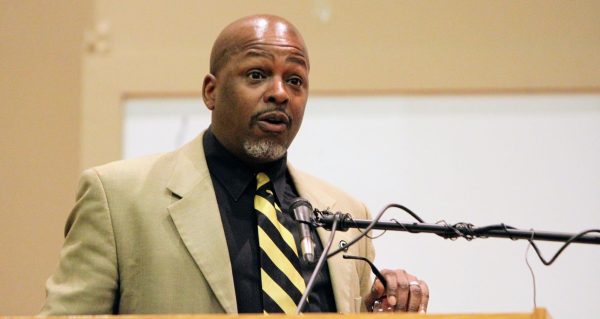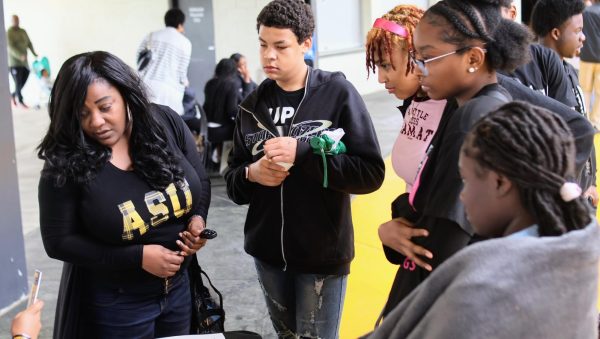Communications department receives new furniture for newsroom
PHOTO BY JAELYN STANSBURY/CHIEF PHOTOGRAPHER
The new set is designed uniquely for Alabama State University’s students who are interested in learning broadcast journalism and for those who are interested in becoming anchors as well as the technical parts of producing a television show.
February 11, 2023
For students who are interested in becoming network anchors, reporters of poduction managers, Alabama State University has recently added a new set of equipment to the broadcast studio on the fifth floor of the Levi Watkins Learning Center.
The new equipment costs a little over $27,000.
According to the department chair for the department of communications, William Russell Robinson, Ph.D., the objective is to always have the most up-to-date technology for students who attend Alabama State University.
“This ensures that our students are market ready on day one,” Robinson said. “We are preparing today’s students to become tomorrow’s communicators and thought leaders on the global stage.”
Robinson plans to collaborate with faculty in the future regarding the broadcast studio.
“At any university, collaboration is the foundation for student success,” he said. “I was talking with the faculty in the department of language and literature, and in our discussion, the term meta major came up. The meta major would allow for an immersive educational experience where a student would have a cluster of courses within, let’s say, art, communications and interdisciplinary studies. This is long-term vision planning, but it is the current topic of discussion in higher education.”
Robinson wants to add more faculty and staff in the future to run the studio more efficiently.
“We could have the best production facility in the state,” he said, “but if you don’t have the faculty and staff to cover the academics and operational maintenance, that’s a problem.”
He continued.
“I think the other addition would be more students in the major. We need students who are passionate about our major, who, to me, are about the business of competitive academic excellence as well as those who are tech-savvy.”
There were some questions Robinson did not answer regarding the new equipment, but he directed those questions to his colleague Jermal Allen, production manager, who was instrumental in the retrofit of the studio.
“We’re still sorting out what our needs are,” Allen said. “And from there, we’ll be able to purchase what we need.”
According to Allen, the idea is to expand the studio. It is currently a partial classroom, and in the future, the classroom area of the studio will be removed. Other small divisions will be created in the remainder of the studio for other broadcasting segments, such as an interview corner.
Allen said the availability of the studio to students will depend on the assignment given to them by instructors. However, students may contact Allen and set up a time to come to the studio and learn how to handle the equipment. The time frame will be from 8 a.m. to 4:30 p.m., but they will still need to schedule an appointment with Allen.
The department of communications hopes the studio’s expansion and new equipment will help their students grow their craft and experience.








